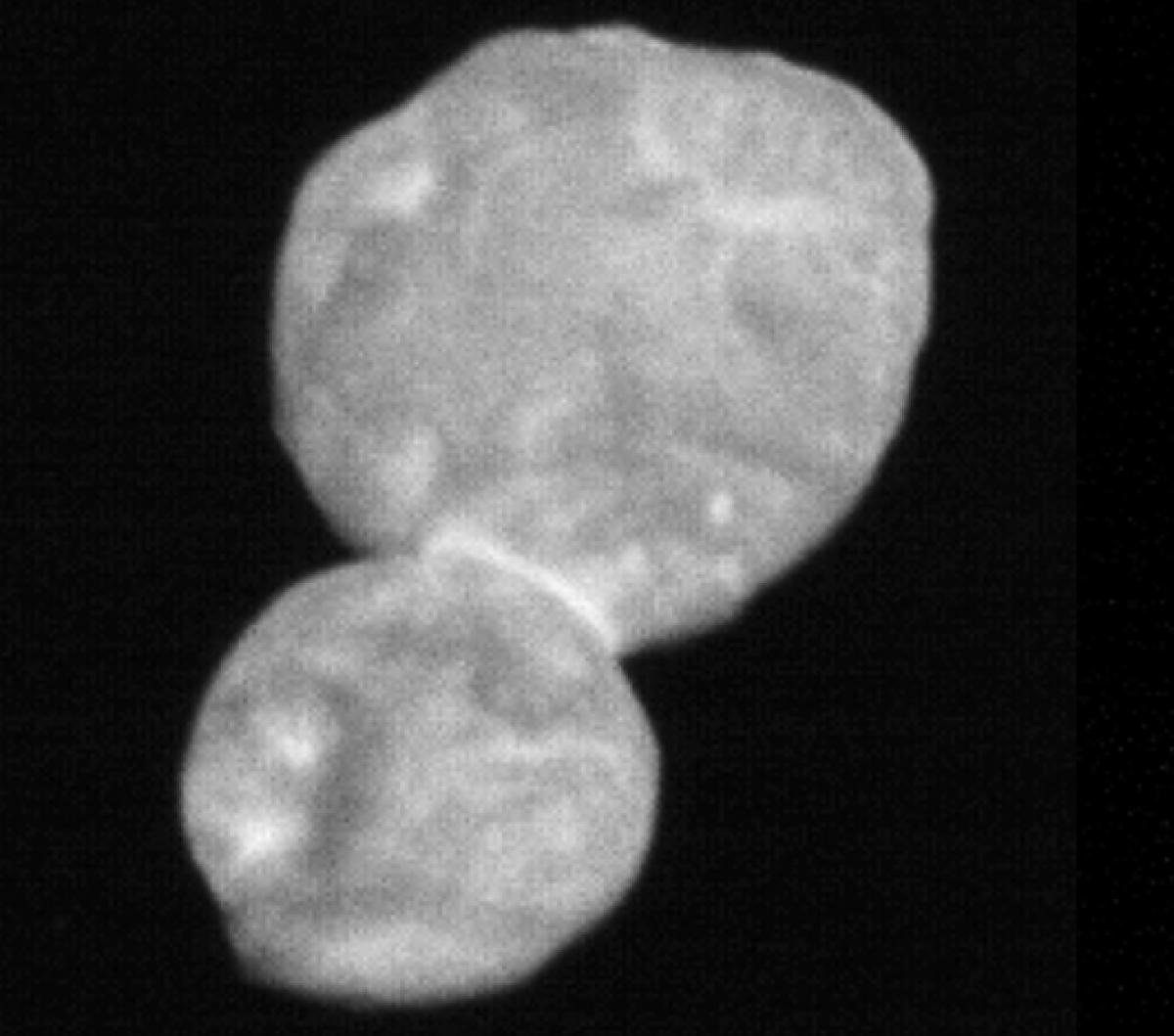NASA has released spectacular images of Ultima Thule, the farthest object ever visited by human technology.
The pictures—taken by the New Horizons spacecraft from as close as 17,000 miles away—are the closest and most detailed look at the Kuiper Belt object to date, revealing an appearance quite unlike any cosmic body known to science.
Read more: Ultima Thule becomes farthest object ever explored by mankind after visit from NASA's New Horizons
They show a "snowman" shaped world consisting of two connected spheres—the larger of which has been dubbed "Ultima" and the smaller, "Thule." In total, the object measures around 20 miles in length, while the two spheres are 12 and 9 miles across respectively.
Scientists think that the two spheres joined together right near the very beginning of the Solar System's formation more than four billion years ago.
"New Horizons is like a time machine, taking us back to the birth of the solar system," Jeff Moore, and geologist and geophysicist with the New Horizons team, said in a statement.
"We are seeing a physical representation of the beginning of planetary formation, frozen in time. Studying Ultima Thule is helping us understand how planets form—both those in our own solar system and those orbiting other stars in our galaxy."
New Horizons also took the first color snaps of Ultima Thule with its Multispectral Visible Imaging Camera, revealing that the object had a reddish surface.
The latest detailed images were taken by New Horizons on New Year's Day and more data—including much higher resolution pictures—from the spacecraft's flyby is set to reach Earth over the coming weeks.
"This flyby is a historic achievement," New Horizons Principal Investigator Alan Stern, from the Southwest Research Institute in Boulder, Colorado, said in a statement. "Never before has any spacecraft team tracked down such a small body at such high speed so far away in the abyss of space. New Horizons has set a new bar for state-of-the-art spacecraft navigation."
New Horizons—which launched in 2006—will continue to observe Ultima Thule over the next couple of years, with scientists hoping that the spacecraft will provide more fascinating insights into the distant object.
"In the coming months, New Horizons will transmit dozens of data sets to Earth, and we'll write new chapters in the story of Ultima Thule—and the solar system," Helene Winters, New Horizons project manager, said in the statement.
Ultima Thule is located around 4 billion miles from the Sun in the Kuiper Belt—a vast disc of small bodies that circle the star beyond the orbit of Neptune, which are remnants of the early Solar System.
"We are going on exploring, pushing farther and deeper into the Kuiper Belt," Stern told Newsweek. "We hope to have another, even more distant Kuiper Belt Object flyby in the 2020s!"

Uncommon Knowledge
Newsweek is committed to challenging conventional wisdom and finding connections in the search for common ground.
Newsweek is committed to challenging conventional wisdom and finding connections in the search for common ground.
About the writer
Aristos is a Newsweek science reporter with the London, U.K., bureau. He reports on science and health topics, including; animal, ... Read more
To read how Newsweek uses AI as a newsroom tool, Click here.








